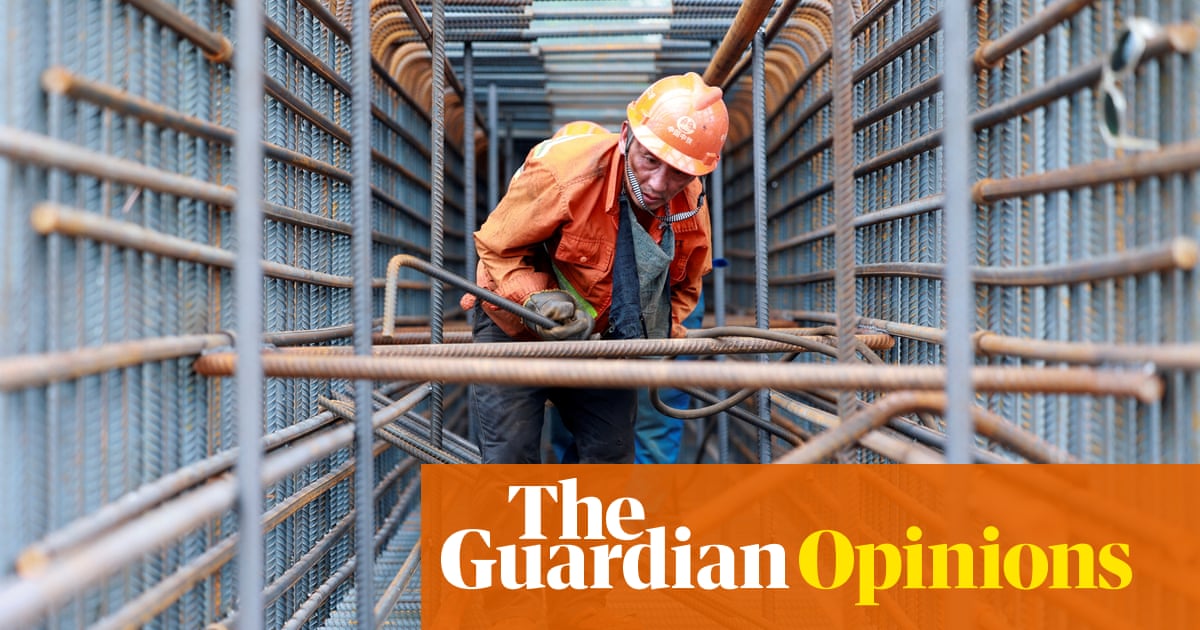China’s sudden economic slowdown is worrying. But it doesn’t have to be all bad news for Australia | John Quiggin
China's sudden economic slowdown is worrying. But it doesn't have to be all bad news for Australia | John Quiggin The Guardian


China’s Economic Slowdown Raises Concerns

After two decades of stunning economic growth, evidence of a slowdown in China is naturally a cause for concern.
Evidence of Economic Slowdown
The evidence, unfortunately, is not hard to find. China’s estimated annual rate of GDP growth is slowing and looks to be stabilising at around 4%, only a couple of percentage points higher than that of rich countries in the OECD. At this rate it will take many decades before income per person in China catches up with that of other leading economies.
Impact on Youth Unemployment
High youth unemployment is another symptom of a slowdown, where businesses retain their existing workers, but stop hiring new ones. For young workers, it represents a violation of the implicit social contract offered by the CCP, where acquiescence in authoritarian rule is rewarded with steadily improving living standards. This represents a threat to the stability of the government, which is doing its best to keep the growth engine running a bit longer, even at the risk of a worse crash later on.
Transformation of China’s Economy
Over decades of rapid economic growth, China has transformed itself from a poor, mostly rural and agricultural country to an urban and industrial country with income per person slightly above the world average.
-
Sign up for Guardian Australia’s free morning and afternoonemail newsletters for your daily news roundup
This process has required huge investments in manufacturing, infrastructure and, of course, construction. The central inputs to this process are steel produced from iron ore in blast furnaces driven by metallurgical coal, and electricity, generated mostly by burning thermal coal. Australia produces all three in large quantities. Even when Australian miners don’t supply China directly, they benefit indirectly from higher world prices driven by Chinese demand.
But the processes of industrialisation and urbanisation are reaching their limits in China, as they have already done in most developed countries. Just as the industrial economy replaced agriculture as the central focus of economic activity, services, and particularly information services are replacing industry.
China is losing manufacturing industries to competitors like Vietnam. Meanwhile, as education standards improve, younger workers are increasingly unwilling to take low-skilled assembly line jobs.
This transformation is inevitable and ultimately beneficial, but it implies the end of one of the biggest construction booms in history. The recent $81bn loss announced by financially distressed firm Evergrande is only the beginning. Two years after acute problems emerged in the sector, the government is no closer to managing an orderly resolution.
Challenges for Local and Provincial Governments
There are also big problems for local and provincial governments, which have relied heavily on construction projects to generate revenue and jobs. They have been issuing permits for new coal-fired power projects at a rate of up to two a week, even though existing plants are operating way below capacity and are unable to compete with new solar and wind. The resulting pile of debt, amounting to as much as $US20tn, threatens to send many of them into default.
Impact on Australia’s Exports
None of this is good news for Australia’s coal and iron ore exports. Sales of iron ore to China have been a major source of revenue. And even though we export little coal to China (the lifting of China’s unofficial boycott didn’t change much), a reduction in China’s import demand will reduce global prices.
However, there is no need to panic. Few Australians are directly exposed to losses from lower prices. For most of us, the effects flow through reductions in company tax and royalties, which are a small, though significant, share of government revenue.
Moreover, much of the impact has already happened. Prices of coal and iron ore are far below the peaks reached in 2022, after the Russian invasion of Ukraine. For example, the price of thermal coal exported from Newcastle – which was more than $US300/tonne
SDGs, Targets, and Indicators Analysis
1. Which SDGs are addressed or connected to the issues highlighted in the article?
- SDG 8: Decent Work and Economic Growth
- SDG 9: Industry, Innovation, and Infrastructure
- SDG 11: Sustainable Cities and Communities
- SDG 13: Climate Action
- SDG 15: Life on Land
The article discusses the economic slowdown in China, which is connected to SDG 8 (Decent Work and Economic Growth). It also mentions the transformation of the Chinese economy, which relates to SDG 9 (Industry, Innovation, and Infrastructure). The article highlights the impact of the construction boom on cities and communities, linking to SDG 11 (Sustainable Cities and Communities). Additionally, it mentions the transition to decarbonizing electricity and steel, which aligns with SDG 13 (Climate Action). Finally, the article briefly mentions the dependence on minerals and international students, connecting to SDG 15 (Life on Land).
2. What specific targets under those SDGs can be identified based on the article’s content?
- SDG 8.1: Sustain per capita economic growth in accordance with national circumstances and, in particular, at least 7 percent gross domestic product growth per annum in the least developed countries
- SDG 9.2: Promote inclusive and sustainable industrialization and, by 2030, significantly raise industry’s share of employment and gross domestic product, in line with national circumstances, and double its share in least developed countries
- SDG 11.3: Enhance inclusive and sustainable urbanization and capacity for participatory, integrated and sustainable human settlement planning and management in all countries
- SDG 13.2: Integrate climate change measures into national policies, strategies and planning
- SDG 15.9: By 2020, integrate ecosystem and biodiversity values into national and local planning, development processes, poverty reduction strategies and accounts
Based on the article’s content, the specific targets that can be identified are SDG 8.1 (sustaining economic growth), SDG 9.2 (inclusive and sustainable industrialization), SDG 11.3 (sustainable urbanization), SDG 13.2 (climate change integration), and SDG 15.9 (ecosystem and biodiversity integration).
3. Are there any indicators mentioned or implied in the article that can be used to measure progress towards the identified targets?
- GDP growth rate
- Youth unemployment rate
- Education standards improvement
- Reduction in coal-fired power projects permits
- Reduction in coal and iron ore prices
The article mentions or implies several indicators that can be used to measure progress towards the identified targets. These indicators include GDP growth rate, youth unemployment rate, education standards improvement, reduction in coal-fired power projects permits, and reduction in coal and iron ore prices.
Table: SDGs, Targets, and Indicators
| SDGs | Targets | Indicators |
|---|---|---|
| SDG 8: Decent Work and Economic Growth | SDG 8.1: Sustain per capita economic growth in accordance with national circumstances and, in particular, at least 7 percent gross domestic product growth per annum in the least developed countries | GDP growth rate |
| SDG 9: Industry, Innovation, and Infrastructure | SDG 9.2: Promote inclusive and sustainable industrialization and, by 2030, significantly raise industry’s share of employment and gross domestic product, in line with national circumstances, and double its share in least developed countries | Youth unemployment rate |
| SDG 11: Sustainable Cities and Communities | SDG 11.3: Enhance inclusive and sustainable urbanization and capacity for participatory, integrated and sustainable human settlement planning and management in all countries | Reduction in coal-fired power projects permits |
| SDG 13: Climate Action | SDG 13.2: Integrate climate change measures into national policies, strategies and planning | Reduction in coal and iron ore prices |
| SDG 15: Life on Land | SDG 15.9: By 2020, integrate ecosystem and biodiversity values into national and local planning, development processes, poverty reduction strategies and accounts | Education standards improvement |
Behold! This splendid article springs forth from the wellspring of knowledge, shaped by a wondrous proprietary AI technology that delved into a vast ocean of data, illuminating the path towards the Sustainable Development Goals. Remember that all rights are reserved by SDG Investors LLC, empowering us to champion progress together.
Source: theguardian.com

Join us, as fellow seekers of change, on a transformative journey at https://sdgtalks.ai/welcome, where you can become a member and actively contribute to shaping a brighter future.







